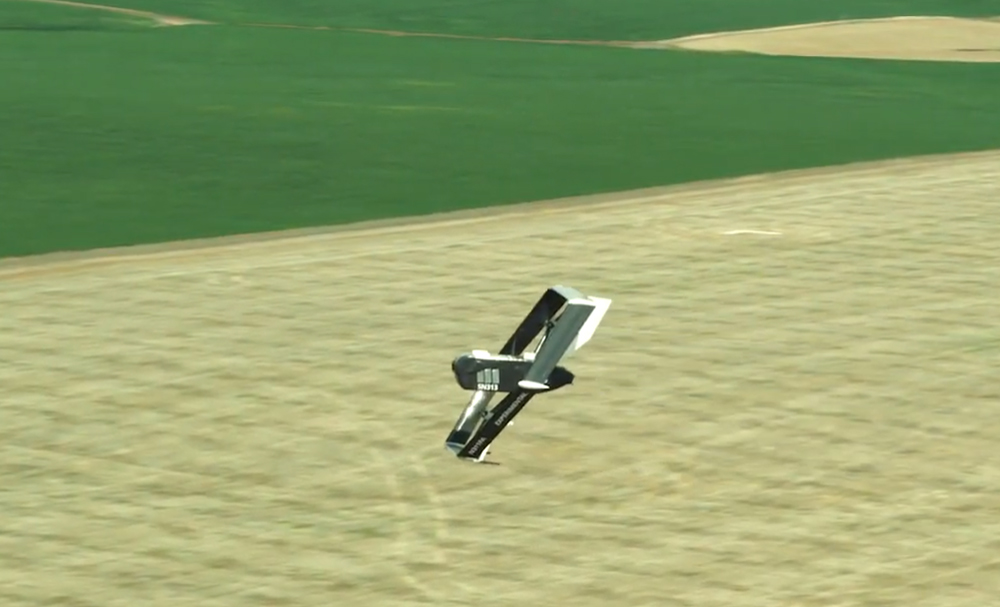Amazon launches drone delivery. How it will work

Yesterday, Amazon first introduced its own delivery drone - at its first Re: Mars conference in Las Vegas. This is actually a unique device, stuffed to the brim with sensors and algorithms. In addition, it is a transformer drone. He knows how to fly vertically, like a helicopter, during ascent and landing, and switch to a more aerodynamic “airplane mode” when speed is needed. And the new device looks and works like some kind of car from the distant future.
Shipping with these drones to real customers, Amazon says, will begin in the next three to five months. Her new devices are full of sensors and computer modules, and they train a dozen different machine learning models. They help make drones safer, and teach them how to avoid obstacles. At today's presentation, the company talked about visual, thermal and ultrasonic sensors. All of them were created by Amazon itself, especially for its drones. In general, the entire production process of the drone, from the smallest details to AI and navigation systems, went through Amazon, no other companies even helped it.

Amazon is especially proud of its landing system - it is said to be the safest available at the moment. Even if the drone loses contact with the network, it will find a suitable place and land gently. The company spent tens of millions of dollars to create such a system, but it just needs it: if unforeseen “situations” arise with drones, it may have to turn off this entire operation, which it relies on to leave all the latest competitors like eBay and Walmart far behind.
In its flight mode, the drone slightly resembles the wing of an imperial fighter from Star Wars. Maybe this is no coincidence: Amazon CEO Jeff Bezos is known for his passion for space, and even starred in a cameo role in the Star Trek series.

The flight range of the Amazon drone is up to 25 kilometers, the weight of the parcels is up to 2.25 kg. It has six rotors that can work independently of each other, and six degrees of freedom (instead of four for a quadrocopter), which the drone uses to avoid obstacles like birds or wires. It also applies to the analysis of images from the built-in standard and infrared cameras. There are several of these cameras - allowing the device to notice both distant objects, like an approaching plane, and the closest objects - like the place where it lands. Photogrammetric help himmodels, segmentation models and neural networks. “A complete set of all the algorithms you can imagine from all areas. And all for one task: to ensure that the robot can move well in space without harming itself or others. ”

Gur Kimchi, vice president of Amazon Prime Air, explains:
The most important thing a flying object can do is make the right, safest decision when a situation happens that you did not foresee or plan. This is not in the program, we cannot take into account all non-staff events, and therefore we make his “brain” as free and adaptable as possible.
The VSLAM (Visual Simultaneous Localization and Map Building) method is also used . With it, the drone constantly builds a map of its environment in the brain, and can more or less navigate, even if it does not have any third-party information from GPS. On the way to the delivery place, the device can also remember the distinctive signs of the area, and then return to the warehouse, using them as landmarks, even if all other systems have failed.

Amazon's drone will be quite noisy. At least his first iteration. It was created for continuous operation at fairly substantial loads, and most of the time is tens of meters above the ground, so its sound should not disturb anyone. And the company says it is well within official safety standards. But you would quickly become sick to include such a drone in your room, and such an aggregate will not become a good toy for a child.
Gur Kimchi says that they worked mainly not even to lower the sound level (with such power and such a size of the device, this is still difficult), but to change its profile. They tried to make the sound more “elegant” so that it did not interfere, and, moreover, did not frighten people walking or riding from below. Gur says the difference between the prototype of the drone and the final version is “between the dentist’s drill and classical music.”
If one of the rotors shuts off, the device can fly quietly, almost without losing speed. With two failed rotors - the speed decreases, and he may decide to cancel the mission and return to base. With three or four failed rotors - a safe flight is no longer possible, it is gradually decreasing, it plans to the nearest safe point it has noticed, away from people and objects.
To train AI machines, the company used the capabilities of its AWS. More than 50,000 configurations were tested, and about 30 million hours were spent. Several million simulations were carried out, with different sensor locations, their different configurations, and different camera lenses.
And, of course, the drone physically flew several thousand hours inside a specially constructed hangar with obstacles before the Amazon team was ready to give the green light to begin the deployment of the project. True, in the real world they say that the experience of the machine is not so large so far, and for the next few months the company will carefully monitor its work in small populated cities and towns (most likely, not in the USA, where getting a license to deliver drones is quite difficult , and Amazon doesn't have one yet). They say the main task is to make the machines ready for Black Friday, that is, by November, when they can bring the company the greatest benefit.
PS Pochtoy.com is able to deliver goods from US online stores profitably. And now we sell your goods in America’s stores ( fulfillment service ). We bring delicious sweet gifts in each package (“ Sweets ” service). Get a 7% discount on shipping when registering with the HABR code!

